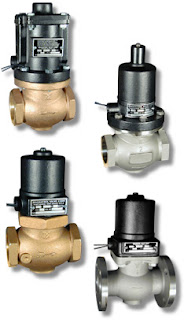 |
| Tank Blanketing Valve Caschco - Valve Concepts |
Often, the gas employed to fill the vapor space in a tank is nitrogen. The purpose of blanketing can vary, but generally involves preservation of the stored product or safety. In both cases, one goal is to keep oxygen levels in the vapor space sufficiently low to inhibit ignition of flammable products, or minimize oxidation and its impact on stored product quality. The inflow of blanketing gas can also be used to keep the tank under positive pressure relative to the surrounding space, considered to harbor contaminants which could otherwise leak into the tank.
What are some functions of a tank blanketing valve?
- Maintain positive pressure in the tank at a selected setpoint.
- Provide gas control at very low flow rates, or close bubble tight, when tank liquid level is static.
- Adjust gas flow to compensate for the maximum liquid draw down rate.
- Provide sufficient closure to prevent supply gas from excessively pressurizing tank.
Blanketing valves are used in conjunction with vents to provide a full range of control over the pressure and content of the vapor space within a tank. A single valve solution eases the design and component selection burden of amassing individual components and combining them into a working assembly. Some useful features of a blanketing valve include:
- Bubble tight shutoff to prevent wasting of purge gas.
- Self cleaning flow path design.
- Pressure balanced pilot, so supply pressure fluctuations do not impact the setpoint.
- Setpoint not appreciably affected by changes in temperature.
- Low maintenance requirements, including complete access to valve internals without removing the valve from the tank.
More detail, including a description of the elements required for proper valve sizing, is found in the document below. Share your fluid process measurement and control challenges with application specialists, combining your process experience and knowledge with their product application expertise to develop effective solutions.




